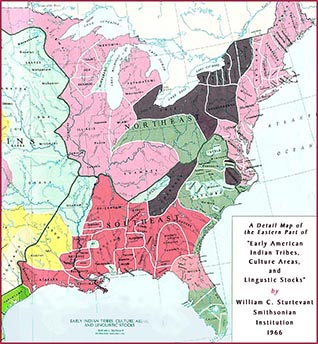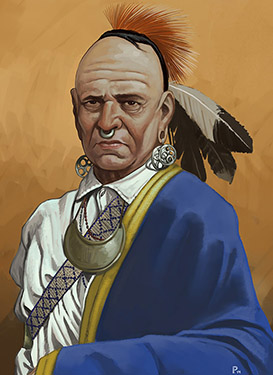The ancestral lands of the Catawba Nation extend through the Piedmont region of North and South Carolina and into southern Virginia. We have lived on these lands along the Catawba River for thousands of years.
The regional trade- and warpaths developed by the various tribes over centuries intersected within the Catawba lands, making them a nexus of cultural and material exchange. Once European settlers arrived, these paths became trade routes with the Catawba lands along The Great Trading Path. The Catawba Nation became an essential stop on the route from Jamestown to Charlestown (now Charleston), and the Catawba became skilled traders, which allowed them to acquire weapons, tools, blankets, and cloth in exchange for furs and other wares like Catawba pottery. Indeed, Catawba bowls and pots became a sought-after commodity for the settlers due to their high-quality.
The Catawba have long understood the need to work together and adapt to our ever-changing circumstances, particularly with the advent of the Europeans. No one knew this better than Chief Nopkehee (named “King Hagler” by the English) who led the tribe from 1754-1763. Nopkehee adopted the title of “King” because the settlers coming into Catawba territory at the time were led by a king.
Nopkehee was a powerful ally to the English and was well respected among the Piedmont tribes. He led the Catawba people to side with the English in the French and Indian War. He also protected the local settlers against Cherokee invaders. He firmly believed in the treaties that were created to protect his people, so when traveling to negotiate the documents, he took the principal warriors with him, because even as chief, Nopkehee did not have the authority to speak for all Catawba by himself, but only with the agreement of the representatives of the Catawba as a whole. (This traditional democratic and representative style of government is still maintained by the Catawba Nation today in the form of the General Council and Executive Committee). Nopkehee was an advocate for working with the British, because he understood that in order to preserve the lands of the Catawba, and to survive as a people, the tribe had to both work together as a people, and with the colonial power.
That heritage has been passed on through many generations since Chief Nopkehee. We fought along the side of the Patriots when the settlers decided they wanted to be free from England, one of only three tribes to do so. George Washington’s journals mention the fierceness of the Catawba warriors many times, noting how valuable they were to the effort.
That warrior spirit and resiliency of the Catawba have helped us through many hard times. When other tribes were being moved west on the Trail of Tears, the state of South Carolina decided not to spend the money because the tribe membership was so low in numbers at the time that it was expected the Catawba would be extinct soon. When the so-called Treaty of Nations Ford robbed the Catawba of the last portion of their ancestral lands, the Catawba worked for years to have their land restored, even if only in part, and to gain federal recognition as a tribal nation. When the tribe’s federal status was terminated in 1951, we reorganized and began the long fight to regain that status, which was finally restored in 1993. That same cooperative tenacity continues to empower the Catawba Nation. We are a strong, resilient people – warriors who know that working together will move us into the future as a proud and prosperous people.



